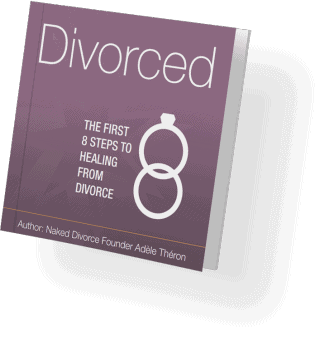
Free e-book: The First 8 Steps to healing from divorce
How the Fuser-Isolator Model Predicts Your Next Breakup

You end a relationship and a few months—or maybe a couple of years—later, you meet someone new.
You fall in love. The world feels brighter. Everything is rosy.
But then… it happens.
The same arguments start bubbling up.
The same frustrations reappear.
You look around and realize—this feels just like my last relationship.
Different face. Same story.
Sound familiar?
You’re not imagining it. There’s a reason your relationships might keep playing out in the same way, and it might have nothing to do with “picking the wrong person” and everything to do with an unconscious pattern you’ve been stuck in.
Welcome to the Fuser-Isolator model.
The Pattern You Can’t See (But Can Feel)
Dr. Harville Hendrix, in his book Getting the Love You Want, describes two broad categories people fall into when it comes to relationships: Fusers and Isolators.
Isolators crave independence and autonomy. They unconsciously push people away and feel safest when they have space—physically, emotionally, even verbally.
Fusers, on the other hand, thrive on closeness. They crave reassurance, constant connection, and togetherness. Time apart can feel like abandonment to them.
Here’s the kicker:
Fusers and Isolators are magnetic to each other.
Like opposite poles of a magnet, they’re drawn together with incredible intensity… only to trigger each other’s deepest fears once the honeymoon phase ends.
The Push-Pull Cycle That Drains You
At first, the pairing feels like balance. The Isolator feels wanted; the Fuser feels safe.
But over time:
-
The Isolator starts to feel trapped. “I need space.” “I can’t breathe.” “I’m losing myself.”
-
The Fuser starts to feel insecure. “Are they pulling away?” “Do they still love me?” “Are they going to leave?”
The more the Isolator pulls away, the more the Fuser clings.
The more the Fuser clings, the more the Isolator retreats.
And before long, you’re both stuck in an exhausting tug-of-war that feels painfully familiar.
Why the Fuser-Isolator Model Matters After Divorce or Long-Term Singlehood
If you’ve been divorced—or single for a while but notice that every relationship seems to end the same way—you might be caught in this cycle without realizing it.
It’s not that you’re broken or doomed.
It’s that you’re repeating a script you didn’t know you were reading from.
The Fuser-Isolator model explains why certain dynamics feel impossible to fix—because without awareness, you can’t change the choreography you’ve been dancing to for years.
Breaking the Cycle Starts Here
The magic word is awareness.
If you recognize yourself as a Fuser, your growth edge is learning to give your Isolator partner space. This doesn’t mean neglecting your needs—it means discovering that independence doesn’t equal abandonment.
If you see yourself as an Isolator, your work is to stretch toward reassurance and connection. Independence doesn’t have to vanish just because you’re close to someone.
When both people take responsibility for their patterns, the push-pull stops being a war—and starts becoming a conversation.
So… Are You a Fuser or an Isolator?
The next time you’re tempted to think, Here we go again, pause.
Look at the dynamic, not just the person.
Because when you see the pattern, you can finally write a new story—one where your past doesn’t keep showing up in your present.
If you enjoyed this post, I’d be very grateful if you’d help it spread by emailing it to a friend, or sharing it on Twitter or Facebook.
With you in service,


For a more personalized approach to your healing journey, book a free Clarity Call now. Our coaches are here to help you take your first steps towards healing. Check out our Resources or our Videos on YouTube.

